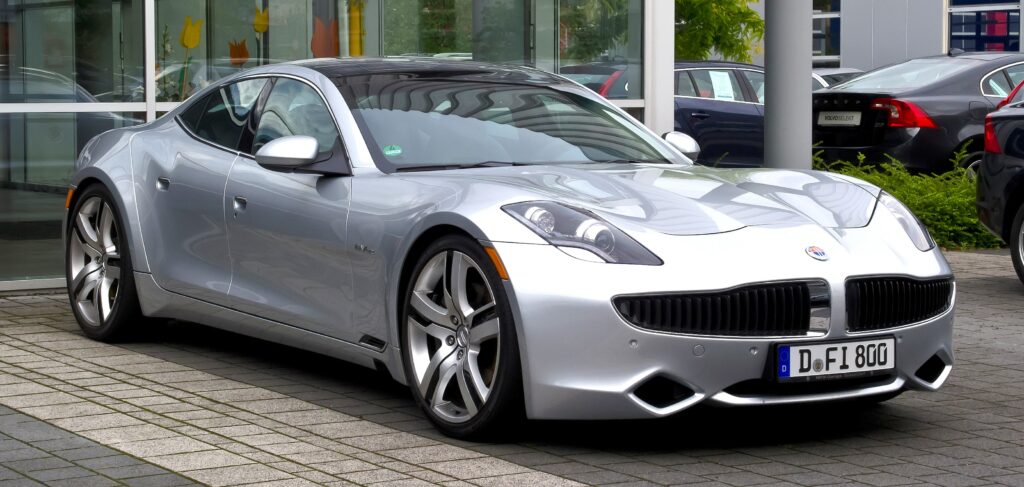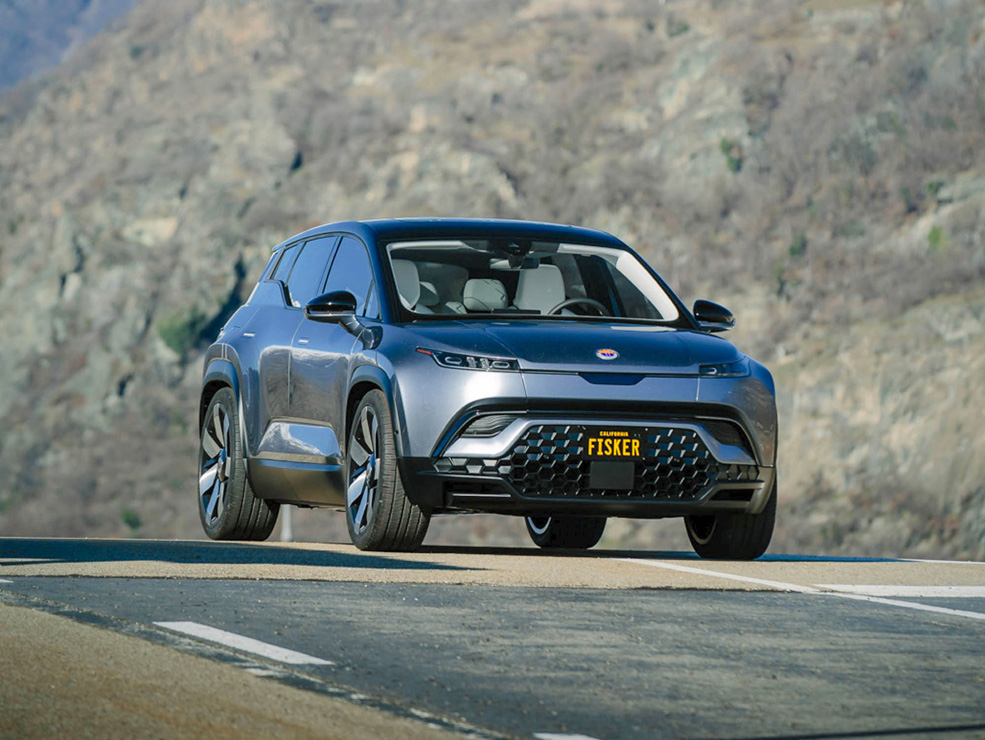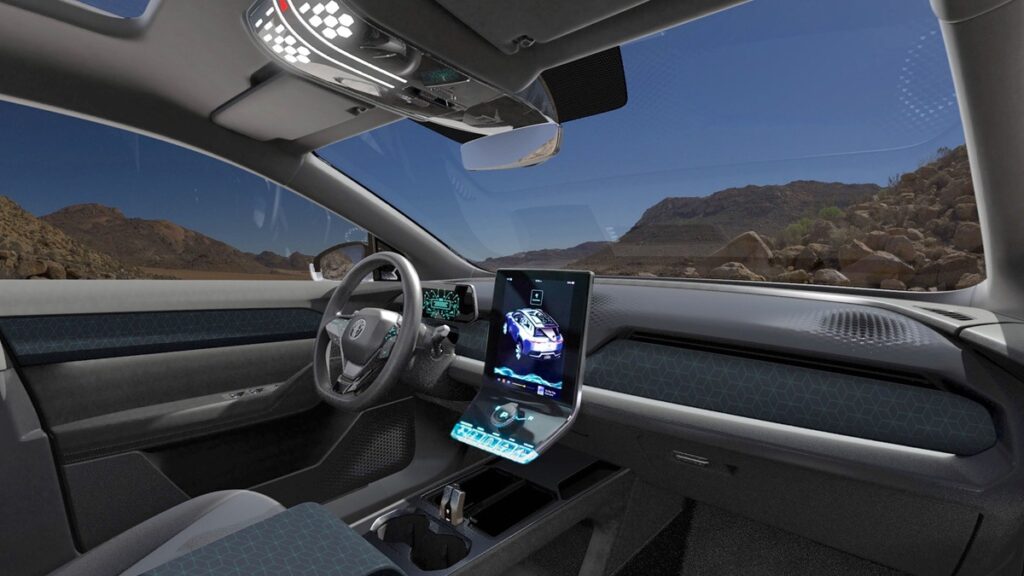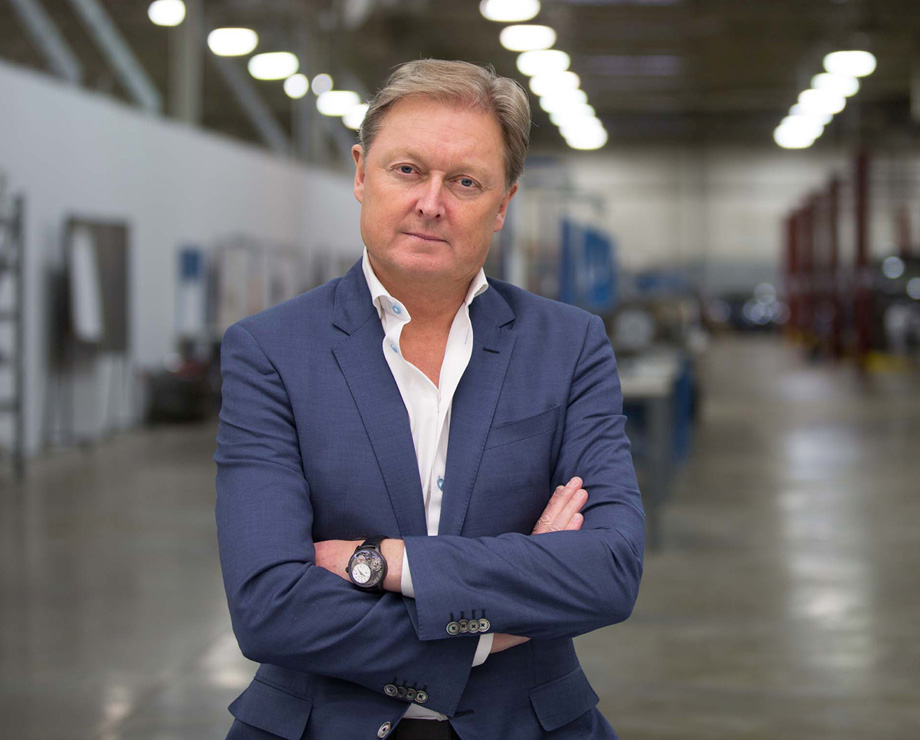Henrik Fisker

(Photos courtesy of Fisker)
Fisker Inc’s founder tells Stewart Mitchell why the company’s first car will be a mass-market, all-electric SUV.
Utility player
For the past few decades, automotive designer and entrepreneur Henrik Fisker has been working on high-performance luxury sportscars and unique coach-builds in the ultra-high-end automotive sphere. He was responsible for the styling of some of the world’s most iconic sportscars, such as BMW’s Z8 and Aston Martin’s DB9 and V8 Vantage.
He has also launched, sold, closed and rebranded several automotive companies, but his latest venture, Fisker Inc, is a very different concept. It will produce a range of mass-market, all-electric vehicles starting with an SUV, the Fisker Ocean.
Business model
Fisker says his motivation for starting an automotive firm that is focused on accessible EVs are business-oriented as well as ethical. “Moving to the mass adoption of EVs will have a positive impact on local air pollution at the point of use, and that is critical,” he says.
“We are facing an environmental crisis, and during their use phase EVs will help with that. We also have a higher level business model for the EV industry that we believe will make Fisker Inc the most sustainable car company ever created.”
That model incudes the design and supply of the powertrain components that will be used in the company’s vehicles. “Currently, individual car manufacturers develop most of the parts of a vehicle in-house, and the design is unique to each manufacturer,” he says. “That design forms part of the manufacturer’s DNA, and extends to the design of the engine, gearbox and driveline.
“OEMs these days also have a range of powertrain solutions – a 1.5 litre I3, a 2.0 litre I4, a 3.0 litre V6, and so on – with some being turbocharged and some supercharged, and so on. For EVs though, they can have just one or two motor models and stack them with the required controllers and cooling system for the appropriate performance and vehicle style.
“However, despite the relative simplicity of an electric powertrain, designing, building and manufacturing a complete powertrain is not feasible for many manufacturers, because it is simply too expensive without a large number of qualified sales of the vehicle.
“At the moment, the demand for EVs is lower than that for IC-engined cars, primarily because of the lack of infrastructure for electric technology. As a result, to recover the cost of development through this lower demand, the unit cost of EVs must be higher for the company to remain financially sustainable.
“To get the price of EVs down to one similar to that of IC-engined ones requires high-volume production. That implies part production runs of hundreds of thousands, but no single manufacturer is producing enough EVs to make them competitive price-wise with an IC-engined car.
“Fisker Inc, along with several other companies, has therefore put together a consortium to co-develop and buy EV powertrain parts in high enough volume so that it makes economic sense to produce them. Fisker Inc is the lead developer for some electrical powertrain components, while other companies are developing other parts.
“Together, we are sharing the load of developing EVs across several companies. For example, the battery pack for the Fisker Ocean is from one company that does battery pack design and integration, and features cells developed by another company that is working in many different battery fields, not just automotive.
“That goes some way towards tackling the manufacturing and distribution of parts for vehicles, which plays a considerable role in the impact the automotive industry has on the environment.
“Also, instead of each OEM developing a unique electric powertrain, the consortium will share the technology and components in the vehicles. That will include the motors, batteries, inverters, charger interfaces and other associated electric driveline components. End-users will select the experience they want from a vehicle in terms of spec and performance, as they do now, but each manufacturer will be able to use a very similar set-up for the powertrain in each vehicle in a given class.
“Having this consortium means we can use the same manufacturers for powertrain components for various vehicles that are competitive in terms of performance and price to what’s currently on the IC engine market. That means we have been able to spec state-of-the-art motors and inverters for Fisker vehicles and sell them at a competitive price, which we would have never been able to do by ourselves.
“It also means manufacturers can easily adjust the technology as they see fit. The base version of a vehicle can use conventional silicon technology, while a high-performance version, which has a higher price point, can use some more advanced silicon carbide technology. This model will be the trend across the EV market as the industry begins to grow.”
Vehicle model
Explaining the rationale behind launching the Ocean SUV first, Fisker says, “The reality today is that people want to buy an SUV, and globally it is the biggest and fastest-growing vehicle market. We needed to launch Fisker Inc with a vehicle with suitable market potential and which provides a platform for exploiting modern electric powertrain technology.

The Fisker Ocean is the first fully electric vehicle developed by Fisker
“Once we’d decided on the SUV form, our target was to make it as efficient as possible. We focused on the aerodynamic profile to improve its drag coefficient where possible, and we have arrived at a body shape that is more efficient than most SUVs currently on the market. We were also cautious with the layout of the onboard systems, so that every joule of energy is used effectively.”
When it comes to the powertrain used for the Fisker Ocean, Fisker says, “We have observed that to be sustainable, there must be a certain minimum level of technology and sophistication in the powertrain. Too crude and the system will not be efficient, and will therefore not have a sufficient use phase and will not be sustainable. AC synchronous permanent magnet radial flux motors are currently the most suitable solution, because of the efficiency and compactness of that technology, so that is what we use in the Fisker Ocean.
“Over the next few years, motor and inverter technology will receive a lot of attention. The efficiency of the powertrain is critical right now, given the battle for ever-longer range. As mass electrification and EV infrastructure improves, range will be far less of an issue, and cost competitiveness will become paramount, both within the companies manufacturing the cars and at the point of sale to the customer.”
Battery
The discussion of the competitiveness of EVs versus IC-engined cars often revolves around the range; the trend to shoot for the highest possible range out of a single charge still hits the headlines. However, Fisker notes that this will decrease proportionally with the introduction of EV charging infrastructure and high-voltage powertrains that can accept much higher C-rates.
He says, “We have concluded that an 80 kWh battery providing a 300-mile range is perfectly acceptable for the Ocean. That is comparable to what most contemporary IC cars can achieve on a full tank; more than that would demand a more costly car, as we see from other manufacturers. I believe the 250-300-mile range will be the norm for a full charge for a while, and eventually more application-specific vehicles will have different ranges.
“As with any engineering exercise, there are trade-offs when designing a vehicle. It is a combination of aerodynamics, the weight and efficiency of the powertrain, and system integration that you have to weigh up against the cost.
“For example, if you can hit the target range with a smaller battery pack, you save weight and some cost, so you may be able to put that cost elsewhere. We don’t know the best compromise yet, because we are still very much at the pioneering stage, but we believe the Ocean is a good start.”
As for cell technology, Fisker says, “One thing we have reached something of a consensus on is that modern lithium-ion NMC battery cell technology will probably be the cell of choice for road vehicles for the next decade or so. That is because the entire development and testing time to ensure battery performance and safety in the automotive industry is so long that even if there were breakthroughs now, there would be considerable lead times before implementation.
“At the moment, many companies are working on many different types of cell. For the industry to be able to capitalise on lowering unit costs with high-volume production, cell designs and chemistries from different cell manufacturers needs to converge to an extent.

“Of course the cell arrangement, cooling techniques, energy management and so on can be manufacturer-specific, but the base cell solution will have to be narrowed down to provide plenty of competition. That’s crucial if the EV industry is to compete with the IC-engined car market.”
As for the cell structure, the Fisker Ocean will use prismatic cells. Fisker says, “We believe this structure is the most flexible regarding layout and stacking/packing volumetric efficiency. There are arguments for all types of cells for EVs – whether it be pouch, prismatic or cylindrical cells – but there is no consensus on the right choice at the moment. It comes down to the design team’s philosophy more than anything else.
“The prismatic cell has the largest number of applications though, because it is widely used in consumer electronics. As such, it is seeing the most development.”
The form and technology of the cell both play a major role in the thermal properties and therefore the required thermal management of each cell, module and battery pack. Battery thermal management is something that, if approached inefficiently, can lead to design teams having to adopt costly solutions. Also, an inefficient cooling system is typically unsafe.
Fisker says, “Battery thermal management has been one of the most critical elements of the development so far, and working with our partners we have produced an extremely efficient battery thermal management system in both hardware and software.”
Use phase
Fisker Inc will not be selling the Ocean for private ownership; it will only lease it on what is known as a flexible lease programme. The company has chosen that route to have full control of the life cycle of each vehicle during the use phase, and all maintenance will be taken care of by Fisker.
“The cars will be equipped to allow software updates to be delivered over the air to the cars automatically, as with cell phones,” says Fisker. “There will also be a system for contacting the company from the car if customers need anything.
“The battery management system is one area that will see ongoing development using over-the-air updates to the car’s OS, as happens with laptops, smartphones and other devices. We are also looking into implementing cloud-controlled interaction for some vehicle operations and updates. That is how we envision the future of car maintenance in an all electric future.”
There are not many serviceable parts on the Fisker Ocean, so there will be a lot less scheduled maintenance than for an IC-engined car. Fisker notes that the battery pack has a projected 200,000- mile use phase before it needs to be reconditioned or replaced. He says, “We expect each pack to reach that mileage before there is any performance degradation, and we have confirmed the longevity of the battery from in-house testing.
“We are still doing some work to define some of the extreme scenarios that might turn up. However, as most cars are used to make the same trips regularly, and those trips are often not very long, exploiting the full range of the battery pack on a journey is likely to be used on only a few occasions a year.
“In a scenario where a driver needs to stretch the pack performance further than the prescribed upper and lower states of charge, we have considered a feature where they can select a mode that extends the range. It would have an impact on the overall cycle life of the pack though, so the driver will receive a warning of this and can then decide whether to take that action. The Ocean also has a solar panel roof, which will provide extra range over the primary plug-in charging.”
The first Fisker Oceans will be with customers early next year.
Henrik Fisker
After graduating from the Art Center College of Design in Vevey, Switzerland, in 1989 with a degree in transportation design, Henrik Fisker began working at BMW Technik, the Munich firm’s advanced design studio. Interestingly, the first project he worked on there was an EV, the BMW E1 concept city car.

The E1 never went into mass production, although it was much more than a city car styling exercise. The plan was to use the engineering in it as a platform for a production run of fully electric BMW 3-series cars during the 1990s, scaling up to 40,000 a year by the end of the decade.
Fisker would work for BMW over the next decade, designing cars such as the Z8 roadster and the X5 SUV. He became president and chief executive officer of BMW’s Designworks, in California, before leaving BMW in 2001 to work for the then Ford-owned Aston Martin, where he led the production design of the DB9 and V8 Vantage.
In 2003 he became the director of Ford’s Global Advanced Design Studio in Irvine, California.
In 2005, Fisker left Ford to start his own car design company, called Fisker Coachbuild. It rebodied cars such as the Mercedes-Benz SL55 AMG and BMW 645Ci coupe to create the Fisker Tramonto and Fisker Latigo CS respectively.
The company made fewer than 15 cars under the brand. In 2007, Fisker and Quantum Technologies launched Fisker Automotive.
In January 2008, Fisker Automotive launched its first car, the Fisker Karma, a luxury plug-in hybrid sports sedan. The Karma was powered by a range-extended series hybridelectric powertrain consisting of a pair of 120 kW electric motors, a 20.1 kWh lithium-ion battery and a front-mounted 260 hp, 2.0 litre fourcylinder direct-injected turbocharged gasoline engine.
After resigning from Fisker Automotive in March 2013 he started a series of other companies, including Los Angeles-based design house called HF Design & Technology, Henrik Fisker Lifestyle, VLF Automotive and, in 2016, Fisker Inc.
Fisker Inc is Fisker’s current automotive brand, and is focused solely on designing and developing all-electric vehicles.
ONLINE PARTNERS






















